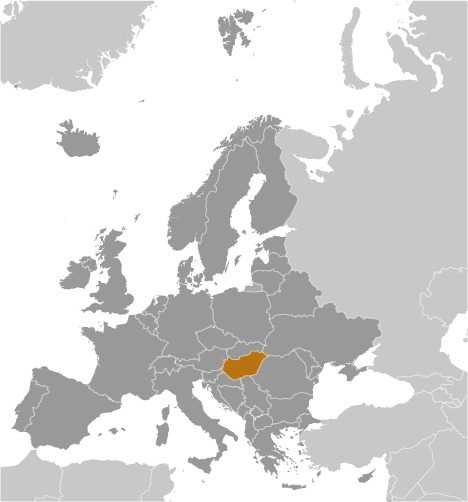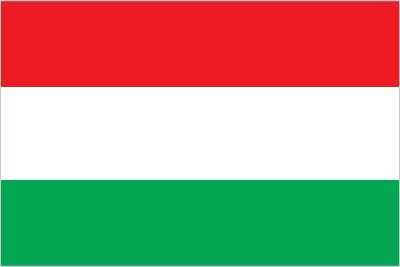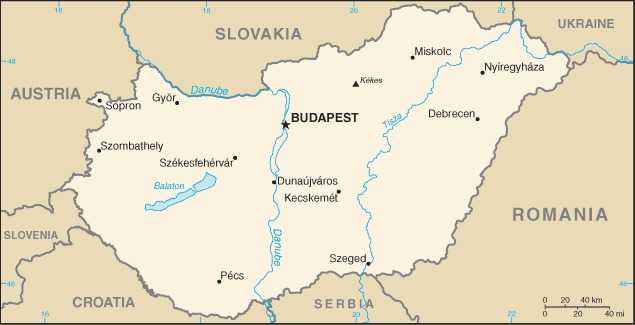Introduction
Background
Hungary became a Christian kingdom in A.D. 1000 and for many centuries served as a bulwark against Ottoman Turkish expansion in Europe. The country fell under communist rule after World War II. Hungary held its first multiparty elections in 1990 and initiated a free market economy. It joined NATO in 1999 and the EU five years later.
Geography
Area
total: 93,028 sq km
land: 89,608 sq km
water: 3,420 sq km
Climate
temperate; cold, cloudy, humid winters; warm summers
Natural resources
bauxite, coal, natural gas, fertile soils, arable land
People and Society
Population
total: 9,855,745
male: 4,812,668
female: 5,043,077 (2024 est.)
Ethnic groups
Hungarian 84.3%, Romani 2.1%, German 1%, other 1.2%, unspecified 13.7% (2022 est.)
Languages
Hungarian (official) 98.8%, English 25.3%, German 12.6%, Russian 2.1%, French 1.5%, Romanian 1.4%, other 5.1% (2022 est.)
Religions
Catholic 30.1% (Roman Catholic 27.5%, Greek Catholic 1.7%, other Catholic 0.9%), Calvinist 9.8%, Lutheran 1.8%, other Christian (includes Orthodox) 1.6%, other 0.4%, none 16.1%, no answer 40.1% (2022 est.)
Population growth rate
-0.28% (2024 est.)
Government
Government type
parliamentary republic
Capital
name: Budapest
Executive branch
chief of state: President Tamas SULYOK (since 5 March 2024)
head of government: Prime Minister Viktor ORBAN (since 29 May 2010)
Legislative branch
description: unicameral National Assembly or Orszaggyules (199 seats; 106 members directly elected in single-member constituencies by simple majority vote and 93 members directly elected in a single nationwide constituency by party-list proportional representation vote, using the D’Hondt method; members serve 4-year terms)
Economy
Economic overview
high-income EU and OECD economy; tightening fiscal policy in response to budget deficit; delayed EU cohesion fund disbursement due to judicial independence concerns; high inflation and low consumer confidence; seeking alternatives to dependence on Russian natural gas
Real GDP (purchasing power parity)
$340.947 billion (2022 est.)
$326.095 billion (2021 est.)
$304.518 billion (2020 est.)
Real GDP per capita
$35,400 (2022 est.)
$33,600 (2021 est.)
$31,200 (2020 est.)
Agricultural products
wheat, maize, milk, barley, sunflower seeds, rapeseed, sugar beets, pork, grapes, apples (2022)
Industries
mining, metallurgy, construction materials, processed foods, textiles, chemicals (especially pharmaceuticals), motor vehicles
Exports
$161.761 billion (2022 est.)
$145.539 billion (2021 est.)
$124.111 billion (2020 est.)
Exports - partners
Germany 24%, Italy 6%, Romania 5%, Slovakia 5%, Austria 4% (2022)
Exports - commodities
cars, vehicle parts/accessories, electric batteries, packaged medicine, computers (2022)
Imports
$169.199 billion (2022 est.)
$145.058 billion (2021 est.)
$121.016 billion (2020 est.)
Imports - partners
Germany 21%, China 7%, Austria 7%, Slovakia 6%, Poland 6% (2022)
Imports - commodities
natural gas, vehicle parts/accessories, electricity, cars, plastic products (2022)
Exchange rates
forints (HUF) per US dollar -
Exchange rates:
372.596 (2022 est.)
303.141 (2021 est.)
307.997 (2020 est.)
290.66 (2019 est.)
270.212 (2018 est.)
Page last updated: Wednesday, May 22, 2024




